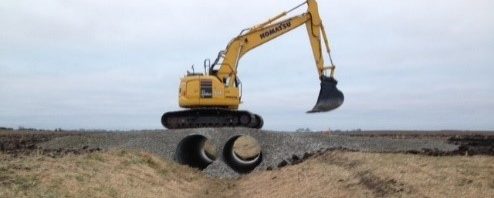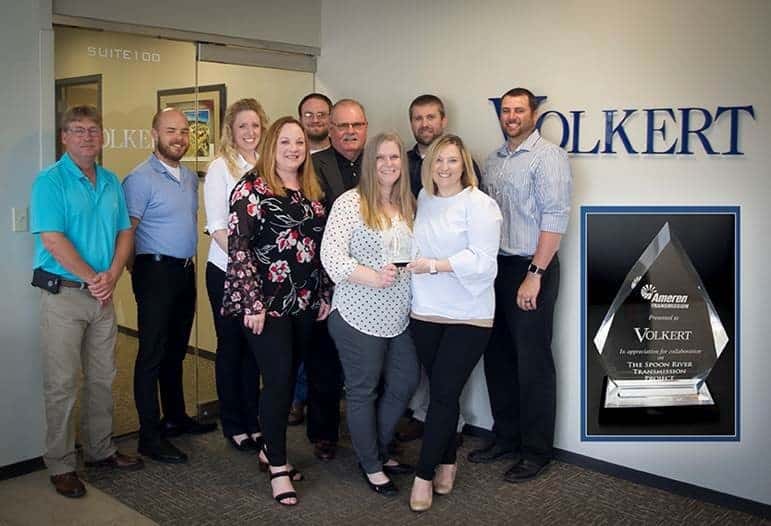My typical day, as both a professional engineer and right-of-way agent, is spent interacting closely with a mix of engineers and real estate professionals. It is because of this interaction that I am reminded that engineers and right-of-way agents often interact, communicate, and work together in very different ways.
You say ‘potayto’ I say ‘potahto’
Real estate professionals, by the nature of their profession, are considered “people persons.” I’ve observed multiple agents in action and using their skills to negotiate with the toughest of landowners. They frequently make eye contact and seem to enjoy engaging with others while easily building trust and rapport. An agent’s focus is on relationships, and it seems to come quite naturally. These are attributes that set apart the great right-of-way agents from the mediocre.
Engineers are detail-oriented with a strong analytical aptitude. They concentrate intently on their work, sometimes to the point of obsession. As you enter our engineering department at Volkert, the only sound you will hear is the clicking of the wireless mouse and the continuous tapping on a keyboard. Engineering work takes intense focus and as many computer monitors as we can squeeze onto their desks. Email is the preferred method of communication. I believe this is because engineers can be methodical about preparing their message before it is sent. Engineers provide logical and practical solutions to technical problems.
I get no respect!
With such different personalities and communication styles, the collaboration between these groups can be difficult. This often becomes an obstacle, and communication can become sporadic or non-existent.
I can’t count how many times I’ve heard real estate professionals’ comment, “We weren’t involved in any project planning, and now we are expected to meet unrealistic demands. Had we been included early on in the process we could have provided better options for project delivery.”
While engineers’ claim, “the right-of-way agent does not show any sense of urgency! I don’t know why it is taking so long to sign these easements. Don’t they understand we have to make our construction letting?”
Engineers and right-of-way professionals are both a critical part of a project. A successful project truly depends on each other’s success. A completed set of final design plans means very little without the necessary land rights required to move forward with construction.
Involving the subject matter experts from both engineering and real estate early on in the project provides a platform for consistent communication and increases the probability of more successful project delivery.
Collaboration can be difficult
To quote English author Thomas Fuller, “All things are difficult before they are easy.”
Every project is unique. Clients, sub-consultants, and contractors bring their own goals and cultures to the project team.
To be successful, you may have to train your employees at all levels on how to communicate, build trust, and solve problems in a collaborative environment.
And, sometimes, we have to educate our clients about the potential benefits of allowing collaboration on their project.
At Volkert, we have come to realize the benefit of collaboration between engineers and real estate professionals. When both professionals collaborate, a smoother project is produced — one that is delivered on time and within budget. As a result, Volkert develops repeat clients. As a consultant, this is our best indication of a job well done!
Focus on the Big Picture
For collaboration to work, the entire project team must commit to a shared vision.
On many of Volkert’s projects, we are part of a larger team of consultants – sometimes we are teamed with our competitors. Focusing on the “big picture” and the common goal of the team rather than each member’s task promotes a sense of support within the project.
At Volkert, we have developed long-term relationships with members of project teams that have extended from project to project. The client has come to expect the same level of collaboration and success on each project.
How can we collaborate on a project?
Collaboration can be best accomplished by regular communication through project conference calls and on-site meetings.
These meetings bring potential landowner, constructibility, and safety issues to the attention of the project team, which allows for a quicker resolution, benefiting the project schedule and budget.
Most of our projects can be divided into four main phases:
- Planning
- Design
- Acquisition
- Construction
Each of these phases presents opportunities for the engineering and real estate teams to collaborate:
Planning:
During the planning phase, approach the initial route selection, permitting, and stakeholder involvement with subject matter experts from all disciplines, including engineering and real estate. This interaction will bring forward potential landowner pitfalls and special requests that can be addressed during the planning phase and avoid these delays during the other phases of the project.
Design & Acquisition:
As the project design phase gets underway, generally the land acquisition phase will also begin. During this time, engineering and real estate should be communicating regularly and frequently to discuss essential project information. Each team member is a subject matter expert in their discipline. However, they should be asking questions to ensure they understand what is being proposed, how it affects the landowners, and what land rights exist.
Construction:
On many projects, the completion of the design and acquisition phases means the project is released to the owner and is ready for construction. The owner then negotiates or bids out the construction work and selects a contractor.
However, depending on the type of project, the involvement engineers and right-of-way agents may be retained through construction. We see this on many of our utility projects where construction produces damage settlements for crops or compaction to a farm field, or on a public roadway.
Benefits of Collaboration
At least three benefits result from a successful collaborative effort between engineers and real estate professionals within a project:
- Time – earlier project completion
- Money – reduced project cost for the owner
- Ease – a smoother project with fewer stakeholder disputes
Cooperation and coordination support better decision-making at all levels. It will also help you sleep better at night!
Helping the client and the team to realize the benefits of collaboration and your commitment to their success will better position your organization as a leader in successful project delivery.






